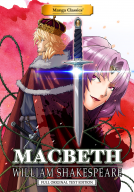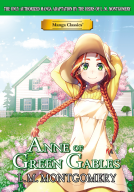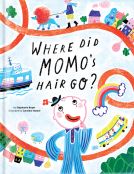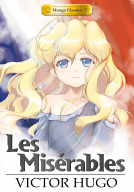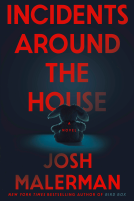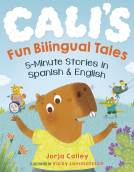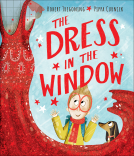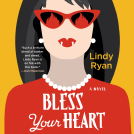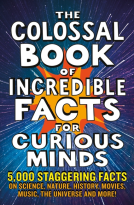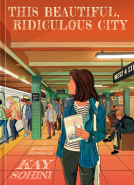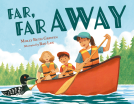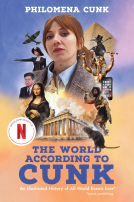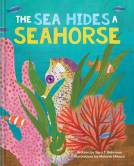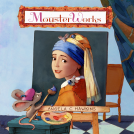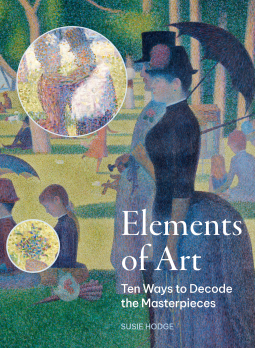
Elements of Art
Ten Ways to Decode the Masterpieces
by Susie Hodge
This title was previously available on NetGalley and is now archived.
Send NetGalley books directly to your Kindle or Kindle app
1
To read on a Kindle or Kindle app, please add kindle@netgalley.com as an approved email address to receive files in your Amazon account. Click here for step-by-step instructions.
2
Also find your Kindle email address within your Amazon account, and enter it here.
Pub Date Apr 30 2024 | Archive Date Apr 18 2024
Quarto Publishing Group – White Lion | Frances Lincoln
Talking about this book? Use #TheElementsofArt #NetGalley. More hashtag tips!
Description
The Elements of Art deconstructs great works of art into manageable components so that you can better understand and appreciate them.
Knowing how to interpret art is one of the biggest issues facing casual gallery-goers. They may ask themselves questions like: Why is the Mona Lisa so small? Why are some frames gilded in gold while others are non-existent? What can the use of material say about a work, whether it’s an oil painting, collage or made of found objects? And does the life of the artist matter?
This book answers all of these questions and more and introduces the key elements with which you can analyze and better understand artwork. From color, medium and size to where the piece is situated, and the artist who made it, you’ll learn what’s important and what’s not so important.
The book includes two parts:
- Part One introduces the elements using examples from throughout art history, introducing key terms and techniques while giving you the tools to apply lessons learned outside of the book.
- Part Two puts the elements into practice by breaking down 30 great artworks element by element—from Michelangelo to Frida Kahlo.
With the Elements of Art, you’ll learn important information about technique, style, material, location and color that will shape you to read and interpret art. Whether you're a student, teacher, culture vulture or art enthusiast, this book will help you de-mystify great works of art, making for a more meaningful, fulfilling and enjoyable visit to any gallery.
Available Editions
| EDITION | Other Format |
| ISBN | 9780711286658 |
| PRICE | $19.99 (USD) |
| PAGES | 192 |
Available on NetGalley
Featured Reviews
This is an incredibly useful guide for those who are beginners at art interpretation. The guide is color coded and includes explanations as well as examples.
The Elements of Art by Susie Hodge goes beyond theseven elements of art that most art students study (colour, line, value, shape, form, texture and space) and expands upon these to Scale, colour, light, movement, medium, technique, content location, time and artist.
Hodge explains each of these concepts and how they are employed in not just examining and understanding art, but also how to enhance our own compositions. It helps the artist or viewer to become immersed in the artwork on a whole new level, a deeper level
The book is well laid out and uses well-known pieces from installations to sculptures to illustrate their point further and I really liked the "consider this" points which are helpful if you are making notes in your art journal for example
In the second half of the book, Hodge reviews famous artworks and guides the reader through using these elements to explore the artwork further. A really nice touch is the key for each artwork which clearly denotes the elements that are being used
A very useful and engrossing book and an essential for any artist, art student or art lover. Wonderful
Thank you to Netgalley, Quatro Publishing Group and Susie Hodge for this fantastic ARC. My review is left voluntarily and all opinions are my own
I learned so much from this book. It’s really one that you could take your time and digest. I especially enjoyed the example artwork toward then end with the biography about the artists. It’s so interesting to learn where these amazing pieces of art came from. This is a great introduction to artistic elements and will definitely be a great reference to anybody getting started in this field.
Thank you for the eARC! I learned so much!
 Librarian 1146347
Librarian 1146347
The Elements of Art by Susie Hodge is an excellent introduction to art interpretation for those new to the subject. The first section breaks down the key elements to consider and these are then put into practice in the second section with look at specific works of art of all types. I found it very interesting, very easy to follow and the illustrations are beautiful. An excellent reference work to come back to again and again.
Thanks to Netgalley and the publisher for an advance copy in return for an honest review.
Sumptuously stunning in its presentation of magnificent, lush, full-color art masterpieces and equally rich in succulent bite-sized educational content worthy of a lifetime of art history and appreciation classes compressed into easily understandable and accessible content, Susie Hodge’s “The Elements of Art—Ten Ways to Decode the Masterpieces,” is a triumph of functionality that embraces and demystifies the variances of aesthetic forms.
Hodges broadens readers’ horizons and imaginations beyond the core artistic fundamentals of line, shape, color, value, form, texture and the spaces that creative works exhibit by forcing viewers to become emotionally invested in each work that they evaluate.
She looks at classical art masterpieces throughout the ages and dissects them according to additional elements that offer a more personal reflection of the artist’s vision for that particular work: project scale/size; palette choices/colors selected; light and darkness (chiaroscuro); movement and flow; medium (oil, acrylic, marble, bronze, wood, etc.); technique (pointillism, photorealistic, impressionistic, etc.); content (what’s included with focal subject); location (place); time; and the artist.
Via those aspects Hodges’ encourages art connoisseurs, and wanna bees, to delve deeper into each art subject by considering each of these unique characteristics.
She asks viewers to think about why the artist chose a particular medium and material to use? Why did they use a particular composition and the included elements in the work? Why was the place chosen? Is there symbolism inherent in the art piece that an untrained person may not recognize?
These are all fabulous techniques for exploring the dynamic nature of art while broadening one’s understanding, perspective, and artistic vision—all critical elements in the educational process.
I love this gorgeous book because it challenges us to explore art beyond its framework and pushes us beyond own limitless understanding—past any of our pre-conceived boundaries, so that we can become one with art in a fully immersive manner.
JoyReaderGirl1 graciously thanks NetGalley, Author Susie Hodges, and Quarto Publishing for this advanced reader’s copy (ARC) for review.
Susie Hodge has written a number of books about museums and art. I have found all of the ones that I have read to be interesting and informative. That is again the case here with Ms. Hodge again sharing her insights and ways of looking at things.
This title is well organized. There are ten elements of art explored in these pages. These include scale, colour, light, movement, medium, technique, content, location, time and, the artist. After explaining each of these in a clear way, Hodge moves on to explore a number of paintings. Just some of these works are The Arnolfini Portrait (van Eyck), The Serenade (Judith Lester), The Monk by the Sea (Caspar David Fridrich), Under the Wave off Kanagawa (Katushika Hokusai), The Starry Night (Vincent Van Gogh), and Guernica (Pablo Picasso). There are too many to list but all are engaging and worth a look.
There are works here that readers will recognize and look at anew and those that will be getting a first glance. In each case, it is terrific to read what Hodge has to say.
Highly recommended to art lover experienced and un. Note the many gorgeous reproductions as the pages turn.
Many thanks to NetGalley and Quarto Publishing Group for this title. All opinions are my own.
If you are anything like me, then you too most likely have struggled when someone asks you what you think of a certain artwork, or what your impressions of a certain art gallery visit are. Usually, I feel like whatever I might say will sound weird. Like, what is the point of saying “I liked it” if I have nothing to base it upon? How do I explain my opinion of something as subjective, so personal, as art? And then, enter this book. I’m a frequent art gallery visitor and therefore I’m often asked about those. Now I have some references to come up with my own way to describe what a certain artwork is to me.
Also, my tween often accompanies me and this book gives me new ways to talk to her about what we have seen and experienced.
I know that this most likely was not the intended use for this book, but this is what it is for me.
 Lisa D, Reviewer
Lisa D, Reviewer
I have always enjoyed art but usually can't explain why I like something beyond that it pleases me. It's frustrating because I want to be able to explain why I like some pieces more than others, and I want to be able to use my preferences to find more art that I will enjoy.
This book is amazing because it goes through the basics of what makes up art, everything from light to when the piece was created to what kinds of colors were used. Then the book looks at specific important pieces and shows you what these artists did to create these amazing works of art. It's so much fun to be able to learn about art in a way I can understand.
Thanks to NetGalley for letting me read this
This is an excellent resource for art lovers, art students, and artists. Susie Hodge includes aspects of art history and science in ways that are easily understood by the layperson and vastly interesting. I found the second half of the book especially interesting to me as an artist. It's helped me better understand how to improve my own paintings and to review them critically.
I'm passionate about art and have no problem pointing out which works I like and which I don't. Until now, however, I have never been able to give a substantive reason for why I find some works of art appealing and others not. "Elements of Art by Susie Hodge has been very helpful in this regard. The author clearly discusses all the components of a work of art - scale, colour, light, movement, technique - and suggests what to look for when analysing. In addition, the book contains very interesting examples of completed analyses of dozens of works of art in various genres, from paintings to sculptures. Everything is presented in a very reader-friendly way, and even a person with little idea of art will be able to grasp the basics of art criticism. I highly recommend this book to anyone who lacks their own arguments in discussions about art and would like to learn how to analyse it more professionally.
What a fun and educational read for aspiring art aficionados and curious life long learners alike. The first half of the book outlines ten key elements of composition -- scale, light, movement, medium, etc. The second half allows the readers to become observers and practice what they've learned in a mindful guided exploration of some of the greatest works of all time from Van Eyck to Picasso.
A great gift for any art lover in your life!
A fascinating guide on how to look at and analyse a painting, including elements that can be used such as colour, medium, movement, technique, content, location, and the artist’s life. Thirty artworks were chosen as samples, ranging from a landscape painted in the 12th century all the way to an installation set up in the 21st century. I found the short snippets about the artist’s life particularly interesting as it can influence the way they paint or the subjects they choose.
This would be useful for artists and/or people who just like to look at paintings. They will be able to talk about them intelligently at least!
5 stars.
 Susan S, Reviewer
Susan S, Reviewer
A creatively designed book which reproduced works of art - this book is a great introduction to appreciating art in a deeper way. It is clearly written and could be both a beginning point and also a review guide for the seasoned art lover.
I personally think that thisnis a good book for beginner artists who wants to learn the basic elements for art but if you are like me whose degree is under Fine Arts, this book is just a good refresher for you as well. Although I like the 2nd part where it shows well-known artworks and it discusses how the elements are used in each of them which I think helps you develope your eyes and analyzing artworks in the future.
Thank you Netgalley for the eARC. All thoughts and opinions are my own and I am leaving this review voluntarily 💙
 Lili F, Reviewer
Lili F, Reviewer
If you are a beginner to appreciating art in a manner further than just looking at a piece and going 'ooh pretty' then this is a perfect book for you. After the introduction that explains the various elements of art (I appreciated the brief segment on pigments, as a painter, paint maker, and collector of pigment information, the history of certain pigments being mentioned is always important.) it presents various pieces of art and demonstrates how to appreciate them using the elements discussed early on. I am a dabbler of art history and have read quite a few books on how to look at pieces of art, but they are universally advanced, I really appreciated how this is for the casual art fan who might go on to become a hardcore art historian nut. It makes art approachable! I also really liked how the art displayed is varied, it isn't just the European classics, you have some pieces from antiquity, modern pieces, photography, sculptures, performance art, and art instillations. I do wish there was a little more focus on art from outside of Europe and the Americas, but I am glad that there was some, a lot of books just completely overlook other cultures, so I was glad to see at least one piece each from China and Japan.
I develop instructional units where students analyze not only literature but visual art as well. We live in a time where A.I. will do as much of a person's thinking as the individual allows, but we still need art to feel connected to others and to have our feelings validated. This book has allowed me to speak about art in a more confident and generalized way. For instance, while discussing Saurat's use of stroke and color, I can compare it to other Impressionist artists too. My students seem to enjoy having the broader knowledge.
First of all, a big thank you to NetGalley, Quarto Publishing Group – White Lion, and Susie Hodge for giving me the chance to review this book prior to its publication. As always, my reviews are honest and the only incentive I receive is I get to read books early.
WHERE WAS THIS BOOK in all my years of art and art history classes I took. I loved the breakdown of the Elements of Art. This is written in a way that is easy to digest. It’s also colorful, which compared to most art texts, is a blessing. I enjoyed the art selected to be referenced in this book as well. It was well thought out and had unique pieces that not everyone would be familiar with.
Overall, I enjoyed this read - 5 out of 5 stars from me. And if you are someone who wants to get into art / wants to know more about some classic and newer art forms; well this book is definitely for you. Actually let’s be real, anyone could pick up this book and understand its content and that a major success. Bravo Susie for writing a stellar text!
interesting breakdown of famous paintings. I learned about a few of my favorite paintings, including Frieda Karol and Van Gogh. I am notmuch f9r art history, but it is always good to expand knowledge.
Thank you to the publisher and NetGalley for the ARC.
This book gives the reader tools to examine and interpret art. It covers lots of elements in detail such as light, movement scale and medium. I enjoyed seeing some of my favorite paintings included in this book and learning new things about them.
 Monique H, Reviewer
Monique H, Reviewer
Elements of Art does exactly what it says it will do in the description. It gives the reader the tools necessary to examine and interpret art. The elements, such as light, movement, scale, and medium, are described in detail and sections are color coded. The book even includes a section demonstrating the use of the elements to interpret works of art. I enjoyed the book and I’ll use it as a reference book.
Readers who liked this book also liked:
Nigel Henbest; Simon Brew; Sarah Tomley; Ken Okona-Mensah; Tom Parfitt; Trevor Davies; Chas Newkey-Burden
Entertainment & Pop Culture, Humor & Satire, Nonfiction (Adult)
Sara T. Behrman
Children's Fiction, Outdoors & Nature, Parenting & Families
